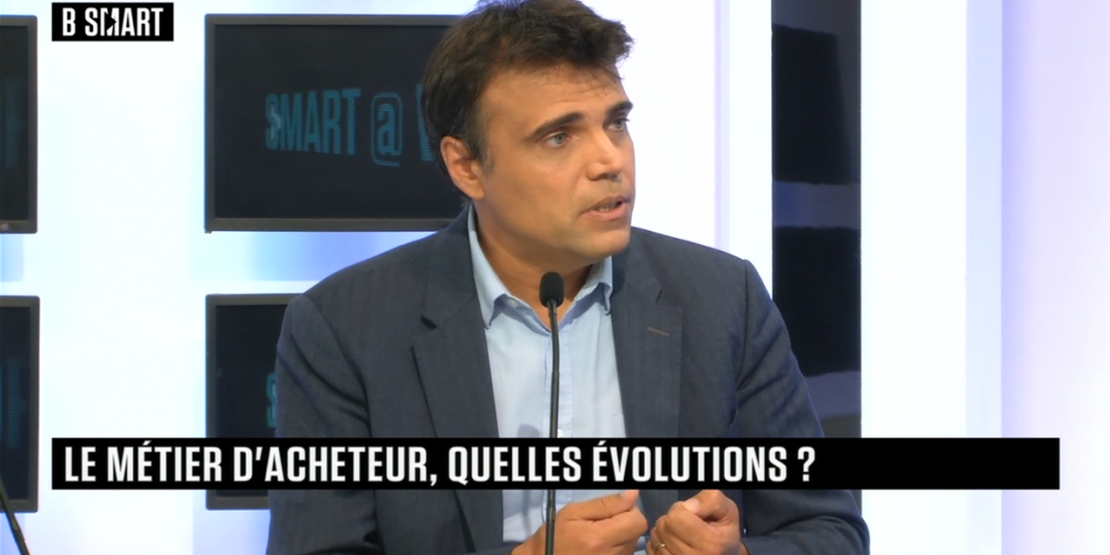In September, the SMART @WORK programme, which focuses on the challenges of "well-working", took a look at the changing face of the buying profession. With this aim in mind, the programme's presenter, journalist Aurélie Planeix, invited along three experts on the subject: Arnaud Cosnefroy, Group Purchasing Director at Ceva Santé Animale; Brice Malm, Senior Executive Manager of the Procurement Division at Michael Page; and Pierre-Olivier Brial, Managing Director of the Manutan Group. Innovation, digitalisation, relationship-building and the quest for meaning were the keywords in this debate.
From competition to innovation
Brice Malm begins with a reminder of the three key periods in procurement's strategic development:
- In the 1970s, at the end of the oil crisis, buyers were focused on prices and competitiveness.
- Then, with the growth of globalisation (the fall of the Berlin Wall, the expansion of Asian markets etc.), they turned their attention to building partnerships. Companies also began outsourcing to allow them to refocus on their core business.
- Today, buyers help to reinvigorate their companies' product range by making the shift towards digitalisation and by driving innovation. This is also known as value creation.
Relationships at the heart of procurement
When it comes to networking, procurement professionals are the experts. All of the guests agree that relationships are at the heart of the profession's strategic development, and of its current challenges. This proved to be the case during the COVID-19 crisis. For example, Ceva Santé Animale helped around 100 companies—members of the Nouvelle-Aquitaine region's club for medium-sized businesses—acquire personal protective equipment from long-standing partners, such as Manutan.
Pierre-Olivier Brial adds, "Our responsibility is to build competitiveness and expertise across our entire ecosystem. […] The ecosystem must progress together". Once again, there are many examples of this. While Manutan brought together nearly 160 suppliers (via videoconference) a few days before filming to support them in their digitalisation efforts, Ceva Santé Animale is helping to organise a two-yearly trade fair that unites all the companies in the region, both buyers and suppliers, and helps to create relationships and business opportunities.
Putting meaning back into procurement
Nowadays, this goes hand in hand with a quest for meaning. As the issue of CSR (Corporate Social Responsibility) continues to grow, buyers have a vital role to play in this.
Without a doubt, procurement departments must now incorporate sustainability and accountability into their procurement strategy. Arnaud Cosnefroy explains, "All this cultural change is happening in the profile of buyers we are trying to recruit. [These are] buyers who create value, who talk about Total Cost of Ownership […] and who think beyond price".
The guests also agree that there needs to be an awareness on the part of the consumer. They must understand the reasons behind a price and what their consumption choices can lead to. For example, if a company has an ecological transition plan amounting to several million euros, how can that not impact its prices?
Finally, an encouraging trend is starting to emerge that helps take on all these challenges (digitalisation, relationships, value creation, CSR etc.): buyers are increasingly involved early on in the company's strategic procurement processes and decisions.








